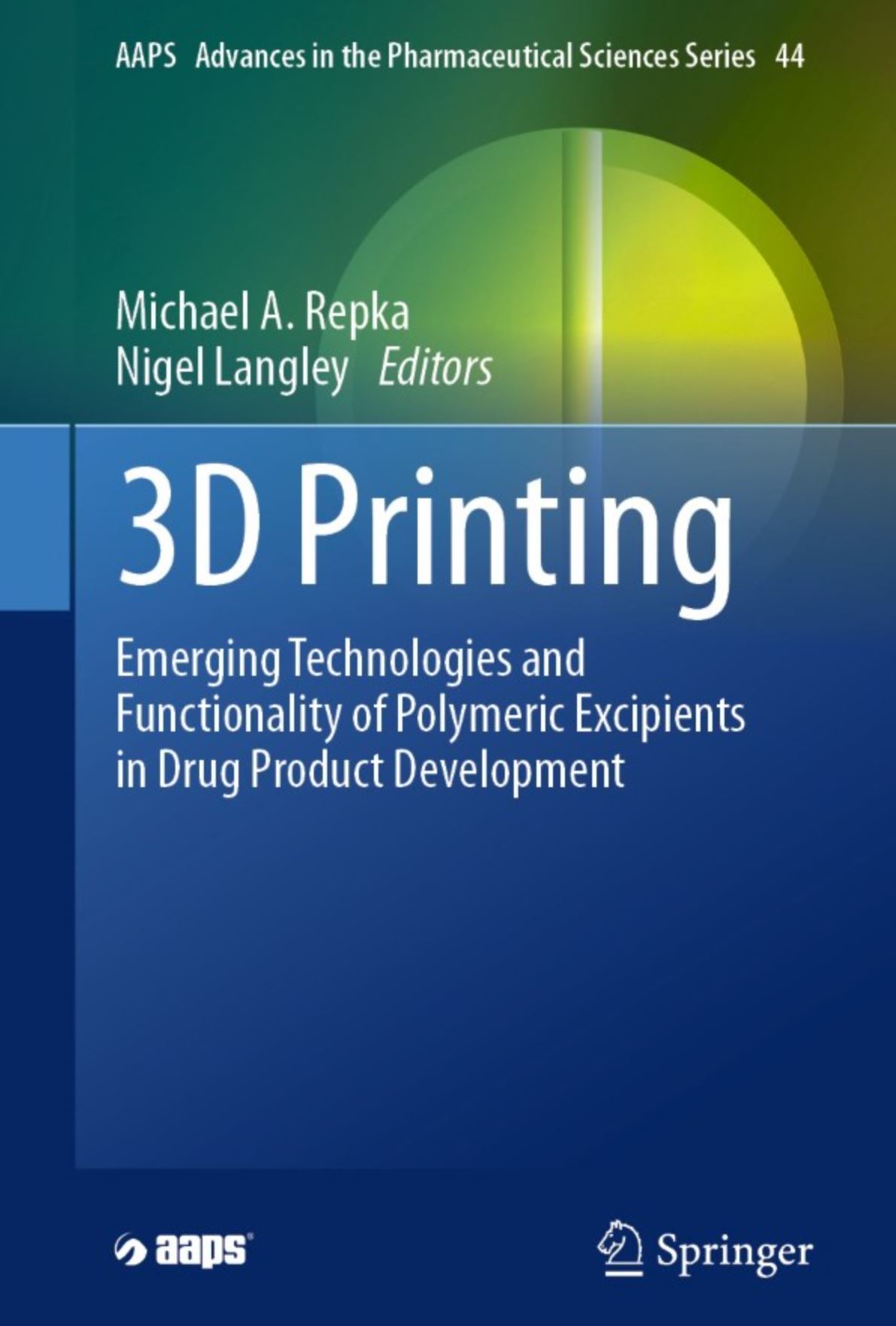Semisolid Extrusion Printing and 3D Bioprinting

Emerging Technologies and Functionality of Polymeric Excipients in Drug Product Development
- Covers regulatory and manufacturing aspects of 3D printing in drug development
- Particular focus on hot melt extrusion and extruded filaments suitable for optimizing 3D printing
- Thorough short text and guide for use on the production line of 3D printing of pharmaceuticals
Editors: Michael A. Repka, Nigel Langley
Chapter 8
This chapter provides an insightful overview of two transformative technologies in the realm of additive manufacturing: semisolid extrusion printing (SEP) and 3D bioprinting. Semisolid extrusion printing, a novel technique, has emerged as a promising approach for fabricating complex structures with intricate geometries using viscoelastic materials. On the other hand, 3D bioprinting revolutionizes tissue engineering and regenerative medicine by enabling the precise deposition of living cells and biomaterials to fabricate functional constructs.
This review delves into the principles, advantages, and challenges associated with both technologies, exploring their applications in diverse fields, including pharmaceuticals, medical devices, and tissue engineering. By addressing critical aspects such as material selection, process optimization, and regulatory considerations, this chapter illuminates the significant contributions of semisolid extrusion printing and 3D bioprinting outlining the evolution of additive manufacturing and its profound impact on healthcare and biotechnology.
Read more here
Kulkarni, V., Zhang, K., Chakka, J., Heshmati, N., Duggal, I., Maniruzzaman, M. (2024). Semisolid Extrusion Printing and 3D Bioprinting. In: Repka, M.A., Langley, N. (eds) 3D Printing . AAPS Advances in the Pharmaceutical Sciences Series, vol 44. Springer, Cham. https://doi.org/10.1007/978-3-031-46015-9_8

